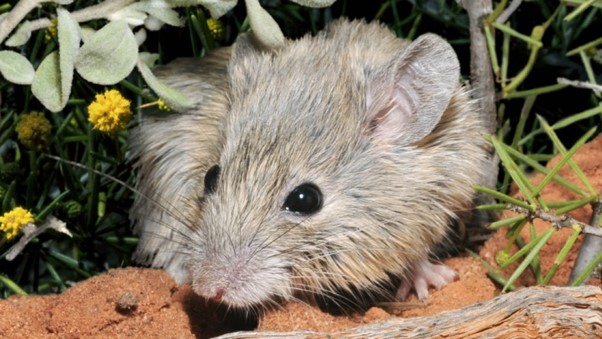Australian scientists have rediscovered a previously extinct native Australian mouse species, Gould's Mouse, that was thought to have died out more than 160 years ago.
This rediscovery was achieved by examining eight extinct native Australian rodent species and their 42 living relatives to better understand the decline of native species since European arrival.
The Gould's Mouse was found to be visually and genetically identical to the Shark Bay Mouse or Djoongari which currently exists only in a small island population in Shark Bay, Western Australia.
This adorable shaggy-coated mouse weighs 45 grams on average, making it twice the size of the invasive house mouse. It’s omnivorous, and feeds on a variety of flowers, leaves, fungi, insects, and spiders. It also builds tunnels and runways to travel at night and uses above-ground nests as refuges during the day.

Image credit: Australian Wildlife Conservancy (AWC), taken by Wayne Lawler
An estimated 34 Australian mammal species have been declared extinct since Europeans arrived on Australia’s shores.
The lead author of the study, Dr Emily Roycroft, was delighted to remove a species from the list of Australian extinctions.
"The resurrection of this species brings good news in the face of the disproportionally high rate of native rodent extinction, making up 41 per cent of Australian mammal extinction since European colonisation in 1788," Dr Roycroft said.
This rediscovery shows the importance of preserving genetic diversity and highlights the need for continued conservation efforts to protect native Australian species to ensure biodiversity.
While the Gould's Mouse will retain its common name, Shark Bay Mouse, the scientific name will revert to Pseudomys gouldii.
Scientists are now exploring methods to recover some of the lost genetic diversity of the species, offering hope for the future of these unique and critically endangered rodents.
The genomics resource that supported the research was enabled as part of the Oz Mammals Genomics initiative supported by Bioplatforms Australia through the National Collaborative Research Infrastructure Strategy (NCRIS), funded by the department.

